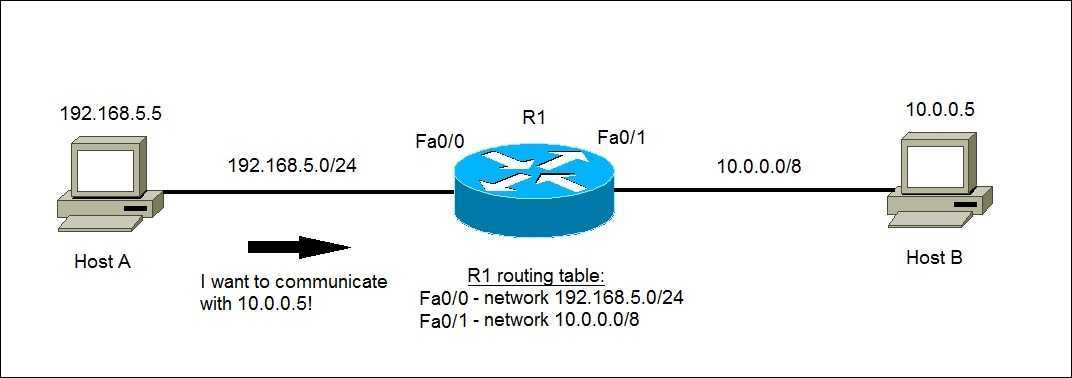IP routing explained
The term IP routing refers to the process of taking a packet from one host and sending it to another host on a different network. The routing process is the usually done by devices called routers. You probably have this device at home, providing you with the Internet access.
Routers examine the destination IP address and make their routing decisions accordingly. To determine out which interface the packet will be forwarded, routers use routing tables which list all networks for which routes are known. Consider the following example:
In the example above we have a simple network of two computers and a router. Host A wants to communicate with Host B. Because hosts are on different subnets, Host A sends its packet to the default gateway (the router). The router receives the packet, examines the destination IP address, and looks up into its routing table to figure out which interface the packet will be sent. It then sends the packet to Host B.
Here is the routing table on R1:
Notice how the packets destined for the 10.0.0.0/8 network will be sent out the Fast Ethernet 0/1 interface. The router knows this information because routing tables are automatically populated with directly connected routes (in fact, the letter C indicates that the route is a directly connected route). Routes can also be statically configured or learned using routing protocols.





